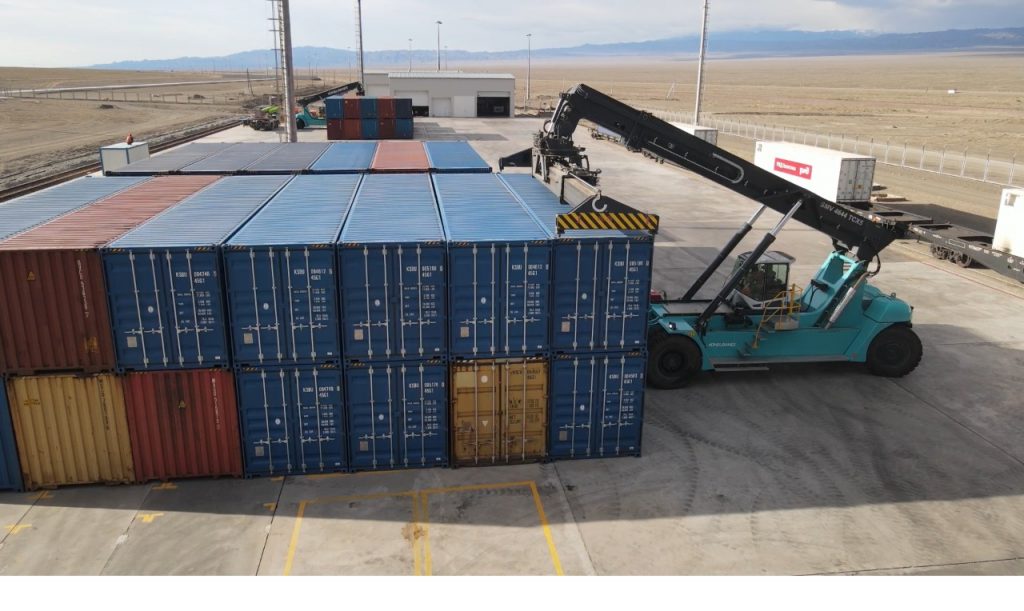In their view, the current system made container transport unnecessarily expensive for shippers. High and unprofitable prices hamper the development of containerization in the country. Kazakhstan also lacks a system of control, repair and maintenance of containers. This was announced today in Almaty at the annual conference of specialized associations of national freight forwarders, as well as carriers and operators of wagons.
The crux of the problem is the substantial difference between the tariffs for the transport of goods in containers and the universal fleet of wagons. The cost of the same cargo in a container for 1 ton of cargo may be 2.5 times more expensive than in a wagon. Thus, the tariff for Kazakhstan for the transport of 1 ton of grain in a covered wagon (capacity 65 tons) is 2,859 tenge, while for transport in a container (capacity 54 tons), the tariff is 5,158 tenge (export message from Pavlodar — port Galaba). By adding the associated costs required for the transport of goods in containers (wagon, container, etc.), the cost of transport for shippers increases fivefold.
According to the commercial director of TOO «PTC Cargo» Bakytzhan Atasheva, in Russia at the basic tariffs cost of transportation of 1-th ton of products, the same grain in containers and covered car are almost equal, and sometimes even lower! In addition, the Russian Federation has long applied the mechanism of a reduction factor for carriage in containers up to 0.7. Consequently, the cost of carriage in containers is significantly lower in relation to the covered wagon.
The current tariff situation, accompanied by a shortage of fittings and a lack of infrastructure for handling operations, is preventing the development of one of the most global trends of the logistics market — containerization. And it is against the background that our largest neighbor China changed the terms of transportation of products to China, giving preference to containers.
In this regard, participants in the transport process have proposed a number of measures to encourage containerization. Among them:
The first is to change the system of tariff formation or to introduce a mechanism of providing reducing coefficients for the transport of goods in containers in inter-republic and export communications up to the level of transport of goods in universal rolling stock.
The second, to arrange maintenance, repair, as well as preparation for loading of containers on the territory of Kazakhstan, it is proposed as an option to re-develop/upgrade the training facilities of VP wagons, KTZ and, if they are not available at certain stations, to use the points of ongoing repair. If it is not possible to implement this mechanism, it is proposed to legalize this type of service to the private sector.
Third, to create equal access conditions at the Dostyk and Altynkol stations for wagon and container operators by regulating at the NAP level the interaction of railway stations, trans-shipment points, TLCs, wagon operators (containers) on the inter-state junction points.
Fourth, amend the NAP to create a single document on the implementation of multimodal transport in export/import and intra-republic communications with the participation of w/d of the carrier, Road transport operator and trans-shipment facilities in order to create conditions for the continuity of the transport of goods and to facilitate the procedure of cooperation with the State authorities (Customs authorities and the Ministry of Agriculture) Organizing the transport of goods in containers in inter-republic and international communications.
Transit of containerized cargo through Kazakhstan from China to Europe and in the opposite direction is now experiencing a period of rapid growth — even at the height of the COVID-2019 pandemic in 2020, the growth of traffic in these areas increased by 32% — up to 876 thousand. TEU (twenty-foot equivalent) against 664 thousand. a year earlier. In 2021, the growth of container freight volumes on the railways of Kazakhstan continued, increasing to 1 million 066 thousand. TEU, with an increase of 22% relative to 2020.
Теги: Bakhytzhan Atashev PTC Holding ptcoperator transportation


